Armament of the Turks of the Early Middle Ages (Part One)
(Revelation of John the Divine 6: 1-2)
It has always been and will be that there is a special literature on a subject that requires study and certain knowledge, which allows this study to be carried out properly, and popular science literature, the content of which on the same subject is adapted for a mass audience. Of course, the larger the topic, the more extensive is its historiography. However, sooner or later, so-called “generalizing works” appear, in which information scattered from different sources is brought together and a very interesting work is obtained, a kind of tip of the iceberg of all the information that precedes it. For example, on the subject of weapons of the Mongol-Tatar warriors such a work is the book of Gorelik MV “The armies of the Mongol-Tatars of the X-XIV centuries. Martial art equipment weapon". (M .: Vostochny Horizon LLC, 2002. - 84 p. - (Uniforms of the armies of the world). - 3000 copy. - ISBN 5-93848-002-7), which is completely academic and at the same time written the same is beautifully illustrated.
Turkic warriors VI –VII centuries. Fig. Angus McBride
However, until this time, Central Asia was not at all empty. There lived their own peoples, there were mighty empires and developed civilizations, the military affairs of which had a significant impact on their neighbors. In particular, such people were Western Turks, the weapons of which the scientific article of A.Yu. was devoted to. Borisenko, Yu.S. Khudyakova, K.Sh. Tabaldiyeva, and O.A. Soltobaeva "ARMING OF THE WESTERN TURKS", prepared under the program of the Presidium of the Russian Academy of Sciences "Adaptation of peoples and cultures to changes in the natural environment, social and technological transformations." Project No. 21.2.
It is necessary to get acquainted with it in order to imagine the military business of nomads in general, and later heirs of the ancient Turks in particular. Since this work itself is quite large and contains a large amount of rather specific iconographic material (graphic drawings), let us try to present it in a somewhat more popular format with illustrations from available modern Internet sources.
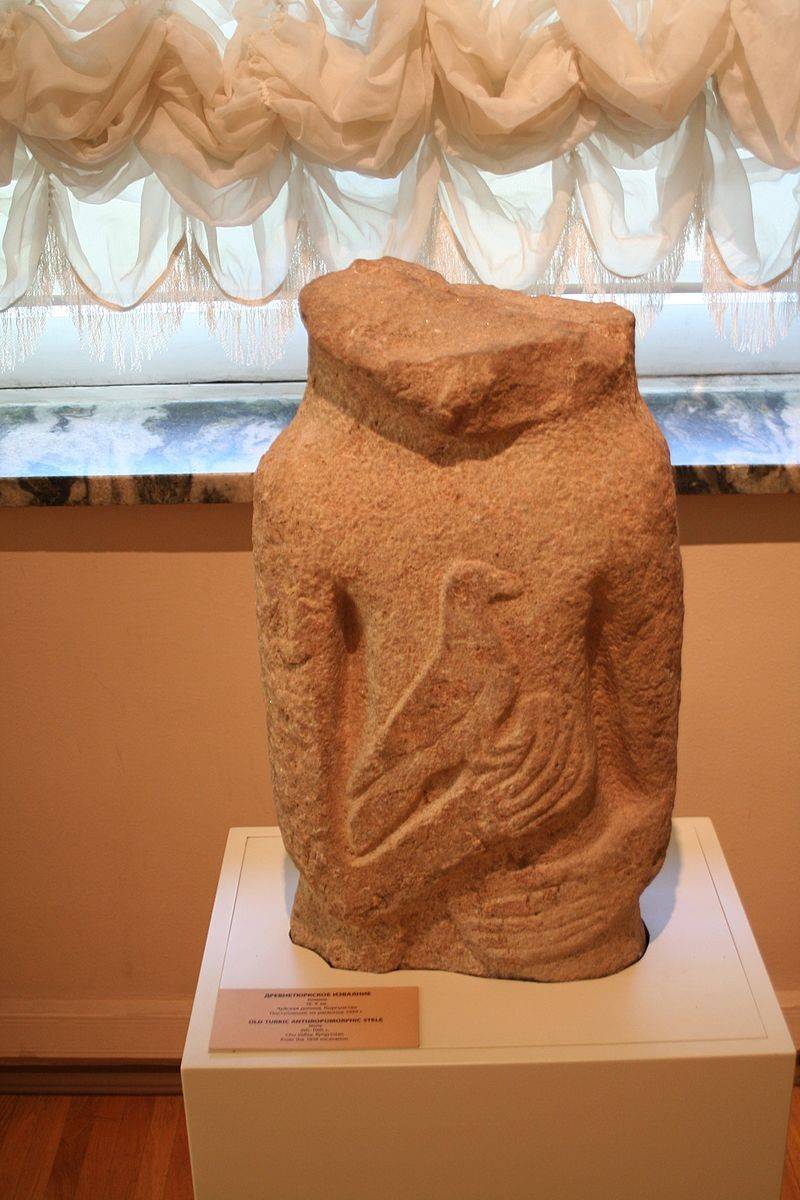
Ancient Turkic sculpture. IX — X centuries. Chuy Valley, Kyrgyzstan. Hermitage (St. Petersburg).
So, what do the authors of this work tell us? It turns out that already in the middle of I thousand n. er The ancient Turks, led by the ruling family of Ashina, managed to subdue the tribes of nomads who lived in the steppe belt of Eurasia and create a powerful military state called the First Turkic Kaganate. In the course of almost continuous wars, they subjugated the numerous nomadic tribes that differed both in culture and ethnicity throughout the Eurasian steppes from the Yellow to the Black Sea and, respectively, from the Siberian taiga to the borders with Iran and China. It was then that, under the influence of their culture, among the Eurasian nomads, the characteristic types of weapons, clothes of warriors and war horses were most widely spread, the tactics of equestrian fighting took shape, and, of course, military traditions. The main goal of the Kaganate rulers was to control the Great Silk Road routes that were in their zone of influence. They charged tribute to silk merchants and sought to impose unequal treaties on China, Iran, and other sedentary agricultural states to pay taxes to them. That is, they formed a certain type of regional culture, which was later inherited by those representatives of the nomadic world who inherited from them.
One of the very interesting monographs on this topic. Its only and main drawback is poor printing and the lack of color photographs and illustrations. Most of our historical publications of the Soviet period before the Ospreyev editions were, alas, like earthlings before Mars.
The successes of the Turks in the early Middle Ages would have been unthinkable, if they did not possess the means of remote and close combat that were perfect enough for that time, as well as armor for the soldiers and their war horses. The researchers note the significant typological diversity of weapons of the ancient Turks, that is, their high military culture. Among the innovations were manufacturing techniques for bows and arrows, bladed weapons, various personal protective equipment, as well as equipment for riders and their riding horses.
Widespread saddles with a rigid base and stirrups, thanks to which the landing of soldiers significantly strengthened, which expanded their ability to fight a horse. In the army, the ancient Turks, and even a number of nomadic peoples neighboring them, it was then that troops of cavalry cavalry appeared, which from that time became an independent branch of the nomads of the Central Asian region. Accordingly, in addition to the "Scythian tactics" of remote shooting the enemy from bows, they also had a technique such as frontal attack by the forces of heavily armed horsemen.
Of great interest in terms of studying weapons, military affairs and military art is the culture of the Western Turks who lived in the mountains and steppe regions of Semirechye in the Eastern and Western Tien Shan, as well as in Central Asia in the 6th - 8th centuries. It is important to note that the states created there also included a large part of the sedentary trade and craft population, who lived in cities and agricultural oases in East Turkestan and in Central Asia. Such a close intermingling of the nomadic Turks with the settled Iranians could not but cause the interpenetration of their cultures, and this in turn affected both the armament and the art of war of both the Western Turks and the Turgesh soldiers. The constant wars of Western Turks with Sasanian Iran also had a great influence on both those and others, which ultimately affected the improvement of military affairs in the territory of the nomadic world of the entire steppe Eurasia.
Map of the distribution of Turkic peoples.
What is the source study basis of all these judgments about the nature of the military affairs of Turks in the 6th-8th centuries? First of all, these are finds of various items of armament during the excavations of the burials of the ancient Turkic culture, as well as images of the Turkish soldiers, made on frescoes, stone sculptures, petroglyphs, as well as ancient descriptions of wars, battles and military organization of Western Turks and Turgeshes (Turgeshes Turkic people who lived on the territory of Western Dzungaria and in Semirechye, and were part of the Western Turkic kaganate. Later they created their own Turgesh kaganate, and at the end of the 7th century they led the local tribes in the fight against invasions. Arabs and Chinese. But in 711, they were defeated by the commander of the East-Turkic Kaganate, Kültegin. Then in the middle of the VIII century the Uighurs conquered the Dzungar turgeshes, and the Karluk - the Semirechenskys.) on Tien-Shan. It is noted that recently a number of works were published in which numerous finds of weapons and protective equipment belonging to Western Turkic and Turgesh soldiers were attributed and put into scientific circulation, so the experts have quite enough material for conclusions.
What conclusions did the authors of this study come to? In their opinion, the archaeological finds and extant information from ancient written sources suggest that the most important type of weapon among the Western Turks and turgises was bows and arrows, with the help of which they fought remote battles. They had compound bows of different types, which differed in the number and location of bone or horn linings on them. The swing of the kibiti shoulders in the bows of the ancient Turkic epoch was somewhat inferior to the bows of the Hunno-Sarmatian time (they were even more!), But at the same time they were more convenient to use in equestrian combat and quick-fire.

Hun bow (reconstruction). The exhibition of Attila and the Huns 2012 of the Year at the Museum of the City of Mainz.
What bone patches were used and how were they positioned? The discovered burials in Tien Shan and in Semirechie contained various bone patches: end side patches, which served to strengthen the ends of the kibiti, and the median ones, which strengthened its middle part.
So, in the ancient Türkic burial of Besh-Tash-Koroo II in the Kochkor Valley in Tien Shan, a bow was found with a kibiti length of about 125 cm, cut from solid wood. Its middle part and the ends were somewhat narrowed and oriented with their ends in the direction of shooting, while the opposite shoulders were widened and slightly flattened. On both sides of its middle part there were median overlays glued to the sides. The plates had slanting cuts for a stronger connection with a wooden base, and then the onions were also twined together with tendons in separate places.
Similar bows were found in other places, in particular, in Tuva and Minusinsk hollow.
Some linings are not only functional, but also a work of art. So, on the surface of one such lining, a hunting scene was engraved from the burial in Tash-Tyube, which depicted an archer who was shooting a deer running from a knee just from such a composite bow.
Fragments of both end and side midline and frontal lining belonging to composite bows were found in the Ala-Myshik burial in the valley of the r. Naryn on the Tien Shan. The end plates of them were narrow, long and slightly curved, while the middle frontal pad opposite it was short and narrow. The inner side of these overlays is covered with mesh cutting for more durable gluing onto the wooden base of the kibiti.
Were found and longer bows with a length of kibiti around 130 cm, common among the nomads of Central Asia, Hunnish time. That is, many nomadic peoples used them even in the early Middle Ages. But for the Eastern Turks such bows were not characteristic, but the Western ones used them in the VI-VII centuries.
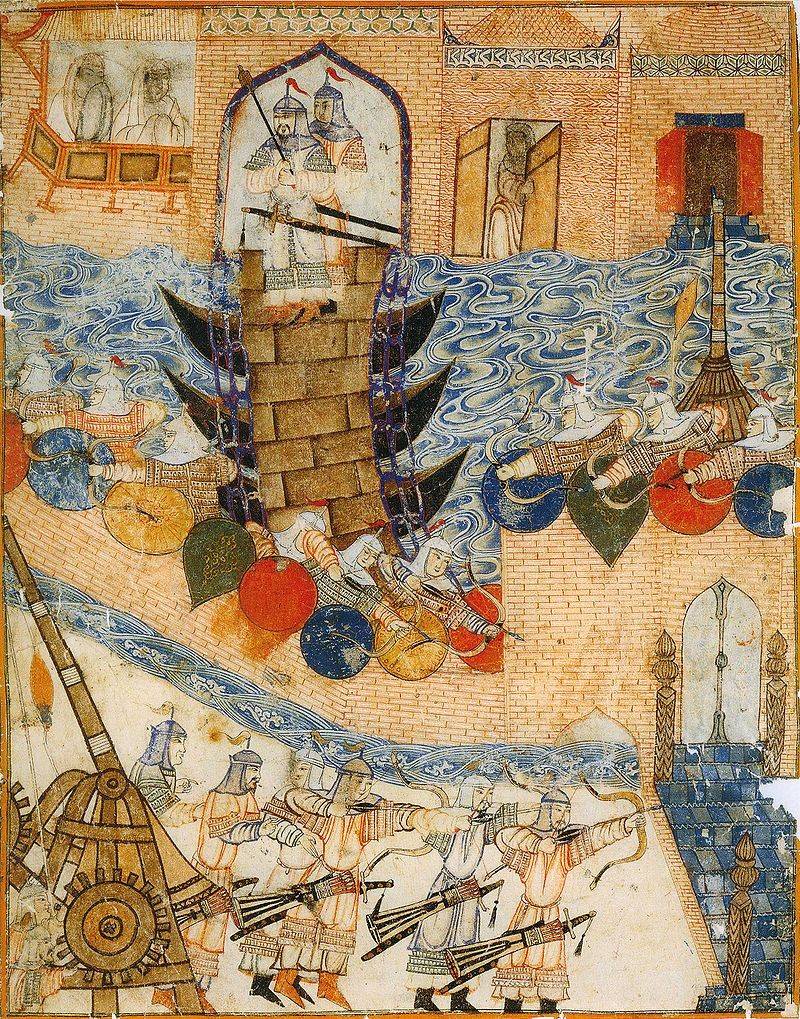
Bows and archers Mongolian time. "The Fall of Baghdad." Illustration for Jami 'at-tavarikh Rashid ad-din. In the foreground - Mongol warriors in heavy weapons. On the left is the Mongol siege weapon.
They were used by the Turks and "Kushano-Sasanian" bows with a short middle part, steeply curved shoulders and straight ends, located at an angle to the shoulders. They were probably the result of the borrowing that took place in all wars and at all times.
The main thing that is emphasized by the researchers is that the bows, which belonged to Western Turks and Turgeshes, were oriented towards firing at the enemy, who had good protection, because they were used in wars with armies of the sedentary agricultural states of Central Asia and Iran.
At the disposal of the ancient Türkic archers there was a large selection of arrows for various purposes with two-, three- or even four-blade tips, with flat, triangular, tetrahedral and round feathers in cross section, and a petiole. For the second half I thousand n. er The most widely used were arrows with three stabilizing blades that could rotate in flight. Bone whistles were often put on shafts behind the tips, whistling in the air. It is believed that three-bladed arrows were the most perfect in the aeroballistic respect and were widely used already in the Hunnish period and later until the late Middle Ages.
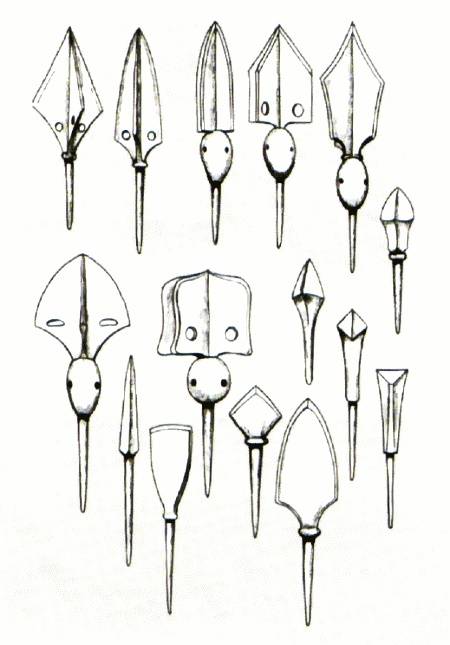
Turkic arrowheads.
The three-lobed tips found in the Turkic burials, on average, had a length of 5 cm, with a pen width of 3, and a petiole 11 long, see. At the same time on the blades you can see rounded holes, and on the petioles - bone balls-whistlers, having three holes. In addition to the three-bladed arrows, the Western Turks sometimes used arrows with flat iron tips.
An armor-piercing three-blade tip of a Turkic type.
Such tips appeared in the Hunnish era, but were rarely used then. But they became widespread later, when the Mongol nomadic tribes dominated in Central Asia. Arrows with such tips are somewhat inferior to those in which they are three-bladed, but they are easier for mass production and have greater speed at short distances.
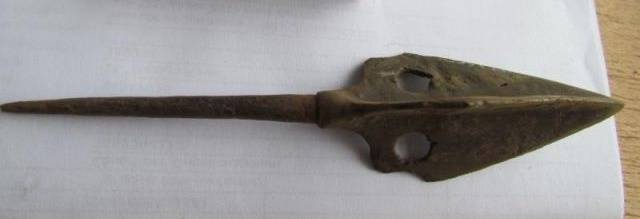
Ampolate tip with emphasis: Yenisei Kyrgyz, 1 thousand AD The early Middle Ages.
There are ten types of three-bladed, seven types of flat, two types of two-bladed and one type of tips with four lobes - that is, the whole developed system. The western Turks and Turgeshes had six types of three-bladed and one type of flat tips. Apparently, they did not need more.
Iron peak-like tips with a combat part rounded in cross section are also of a rare type. Perhaps they were used specifically to push the rings at the chain mail. One such tip was found in a Turkic burial on the territory of East Kazakhstan.
Impressive arrowheads of the Yenisei Kyrgyz: two armor-piercing and two for shooting at the enemy without armor and at horses.
The fact that there is a significant group and typological diversity of armor-piercing arrowheads at the Western Turks and Turgeshes indicates an increase in the role of shooting at the enemy, dressed in protective armor. The only difference is that there are four types of tetrahedral tips in the eastern Turks, while in the western - only one type.
Bone arrowheads belonging to the Turks are also found, although rarely. They have a three-sided pen shape, 3 length, cm, 1 feather width, cm, 3 stem size, cm. The tips have an acute-angled tip and sloping hangers. Three types of bone tips were found in the eastern Turks.
The arrows of the Turkic soldiers were kept in birch bark or in wooden quivers. Western Turks had a quiver with a wooden frame and bottom, and were covered with birch bark. Pure wooden quivers were found in ancient Türkic burials with horses in the Tien Shan. In the burial of Besh-Tash-Koroo I, in barrow No. 15, they found a birchbark quiver with a receiver, which then extended to the bottom. It is about X cm long and about cm long, but in Besh-Tash-Koroo II in the barrow No. 80 they found a quiver also with a wooden successor about 3 m in length, the bottom of which was decorated with carved ornamentation.
Asian onion and its accessories:
1 - arrowheads: a - a bronze cast vtulchaty type of Scythian time, b - iron petiolate with whistlers, c - a method of fixing the petiole in the shaft of the arrow; 2 - Asian bow with a lowered bowstring (a), with a stretched bowstring (b) and at the time of the shot and maximum tension (c), bamboo bows (d); 3 - compound bow and its device: a - wood parts, b - horn parts, c - thread braid, d - birch bark (bast) for covering, d - tendons for winding the most stressed parts, e - onion parts in section : black is a horn, gray is wood, white is skinning or bast; 4 - arrows: a is a feathered arrow with a straight shaft, b is a barley grain shaft, and c is a tapered shaft; g is a tendon string; 5 - archers' protective rings: a - bronze with inscription in Farsi, b - bronze for the thumb of the right hand, c - silver, decorated with engraving; 6 - bowstring tension techniques: a - with a ring on the thumb of the left hand, b - one-finger technique, c - with two, d - with three, d - the "Mediterranean" way of pulling the bowstring, e - Mongolian; 7 is a birch bark quiver with bone decorative overlays for arrows stored upward.
Why did the quivers expand down? Yes, because the arrows in such quivers were placed tips up, and the plumage was at the bottom. In the ancient Türkic monuments of Tien Shan, such quiver accessories as belt buckles and quiver hooks were also found.
That is, the conclusion that the authors of this study make is the following: the soldiers of the Turkic Kaganate were archery soldiers, and they were mounted and fired at the enemy directly from the horse. At the same time, they had a highly developed “culture of bows and arrows”, bows perfected in their design and various carefully crafted arrowheads, including those that, along with the tail, allowed them to rotate in flight. The tips were both armor-piercing, designed to defeat the soldiers in chain mail, and broad-blade, to defeat the enemy's horses. The wide wound made by such a tip caused a strong blood loss and weakened the animal.
To be continued ...
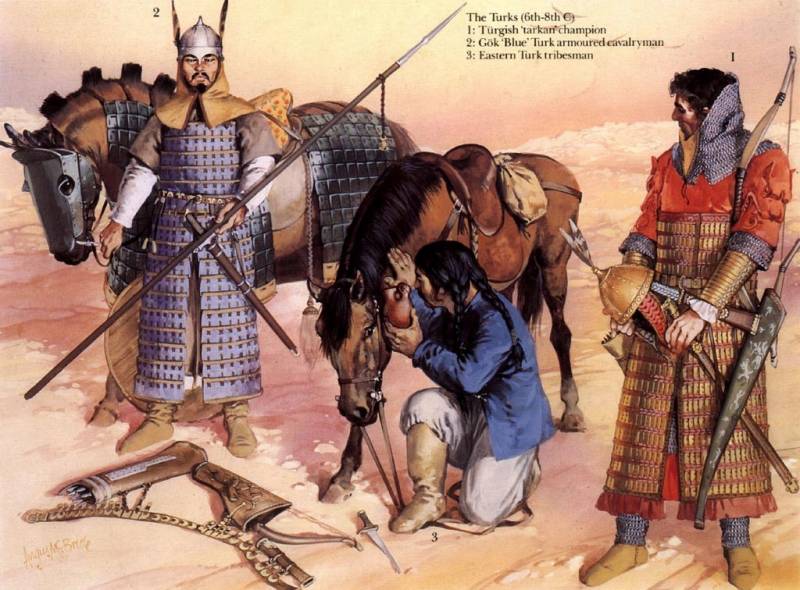
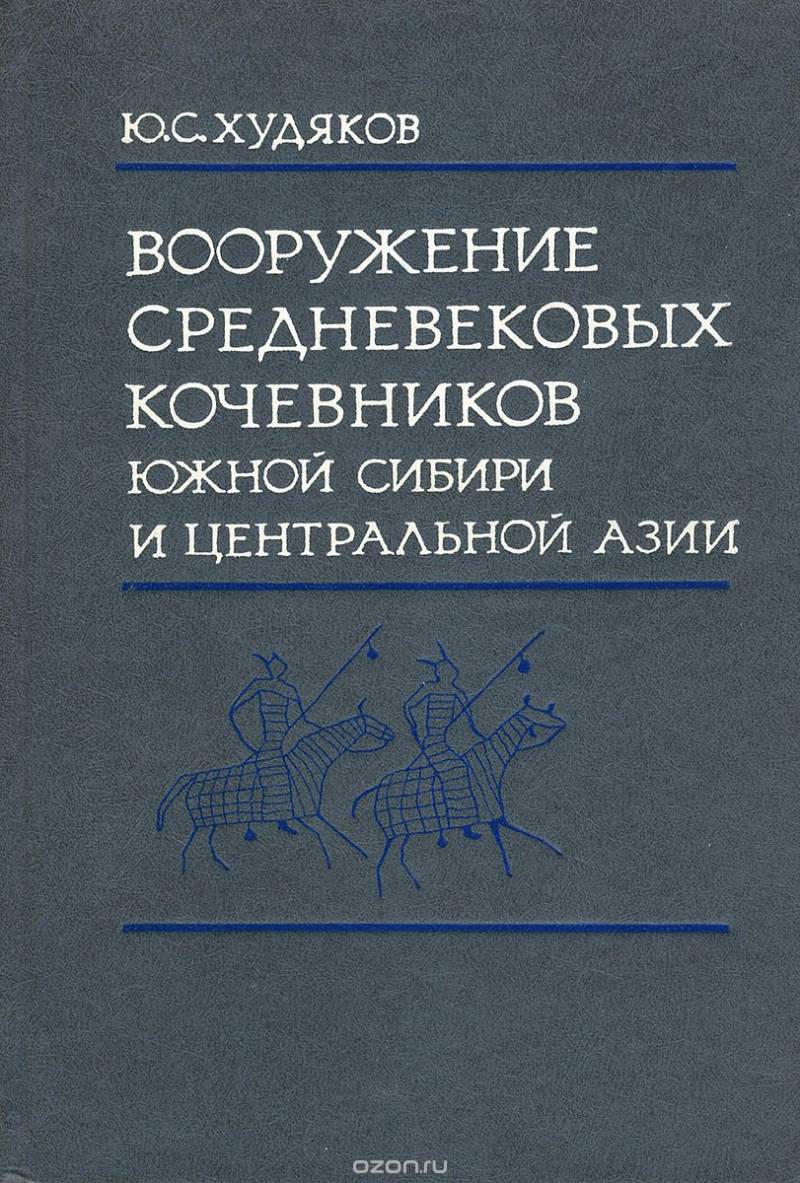
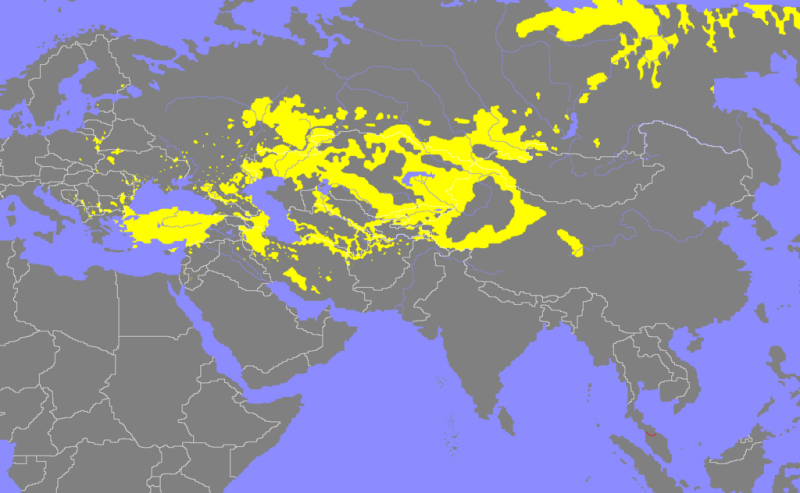
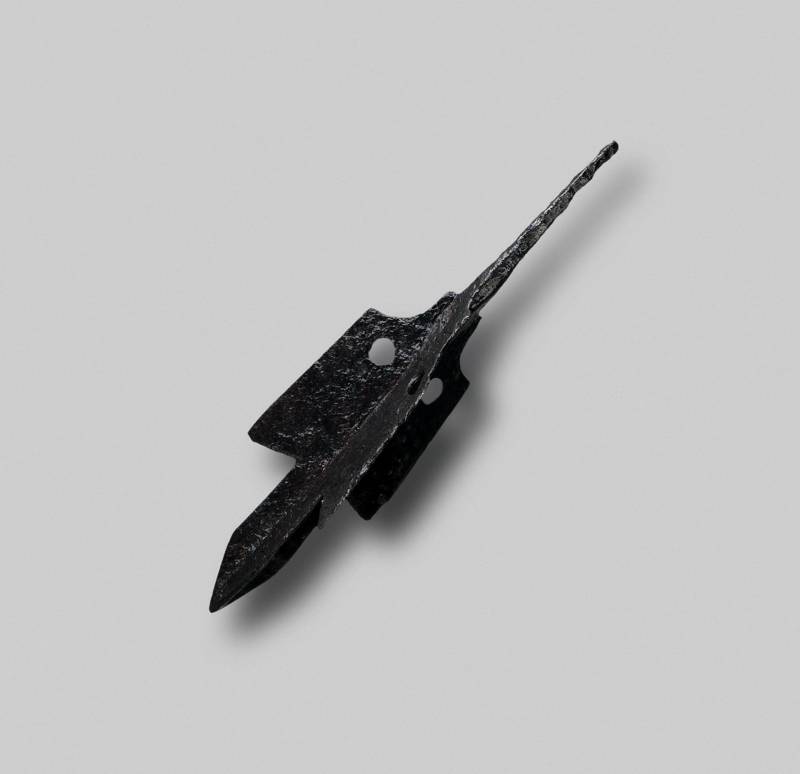
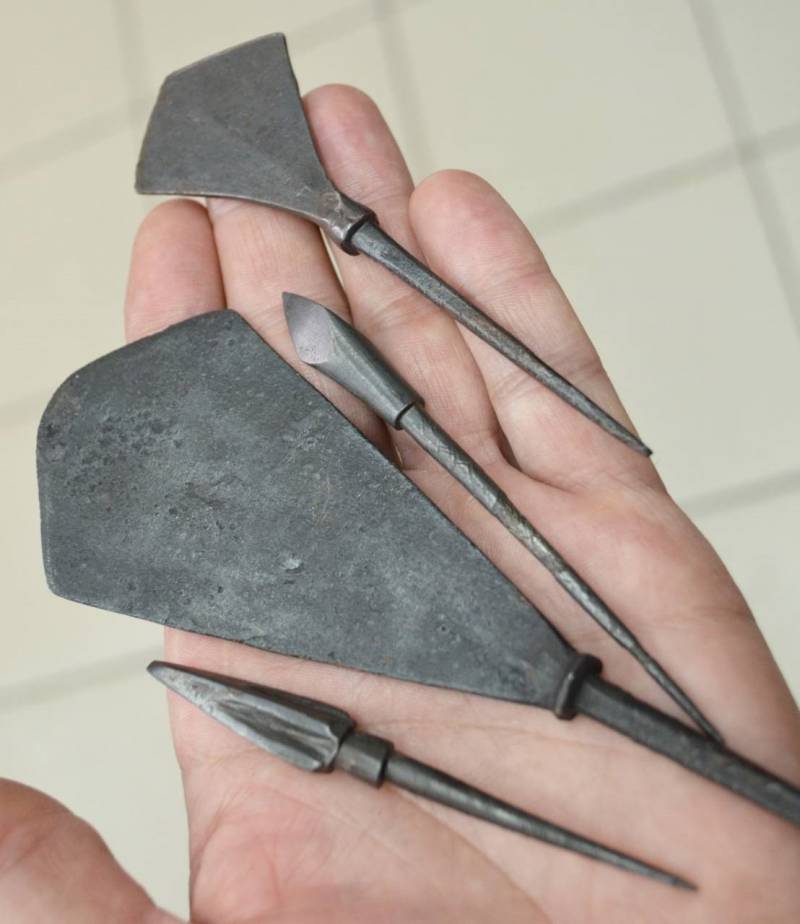
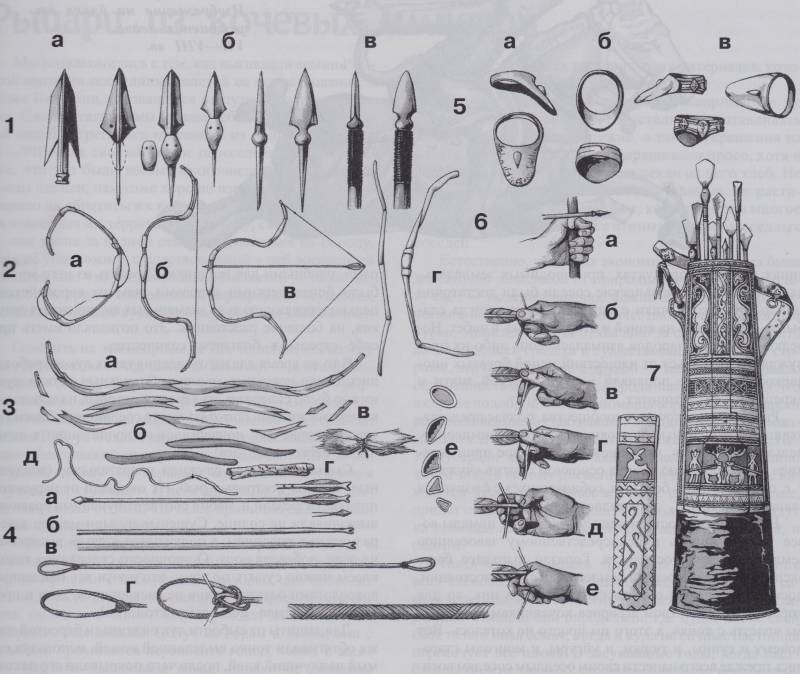
Information